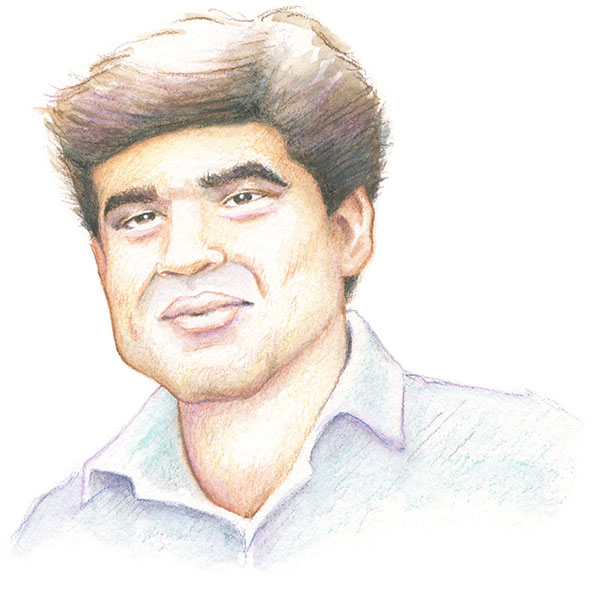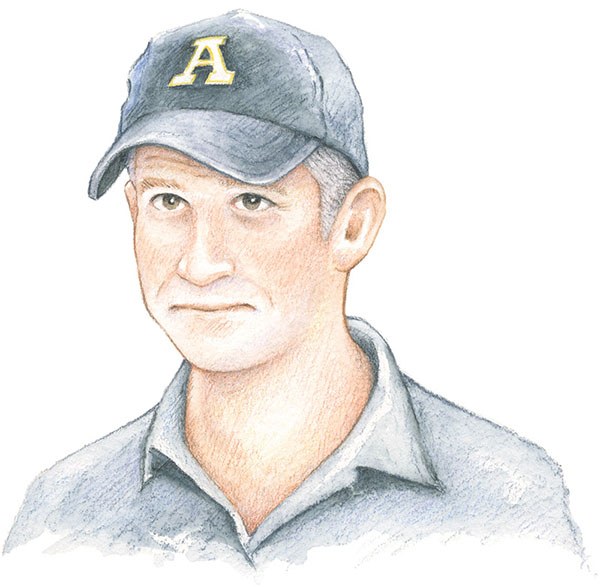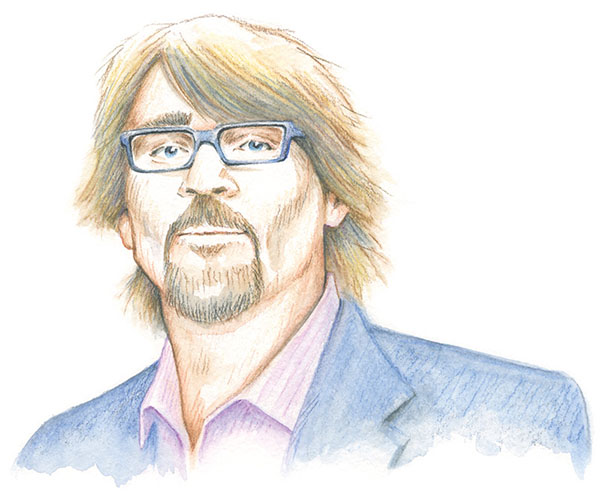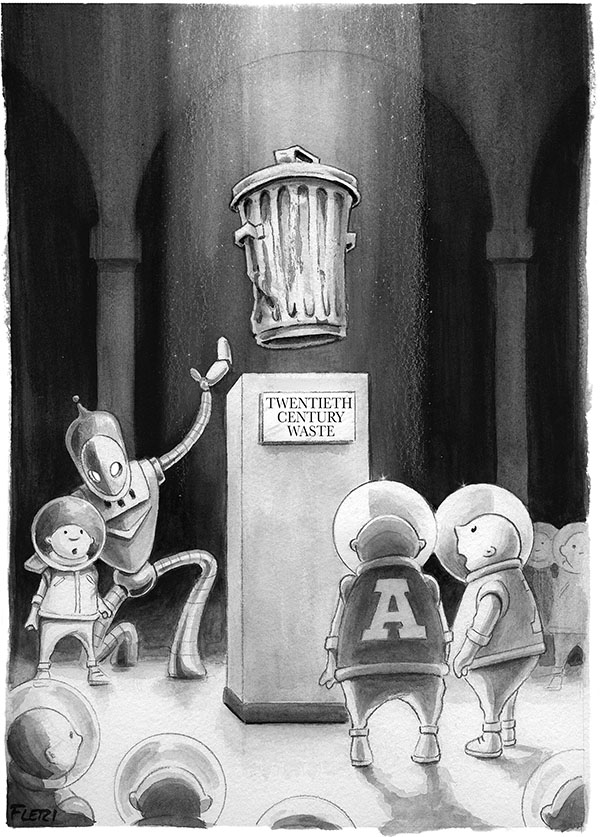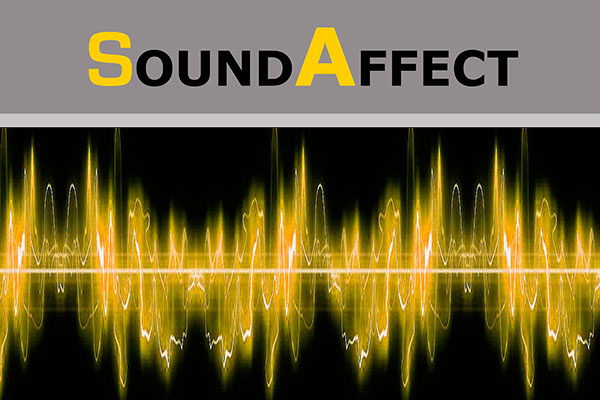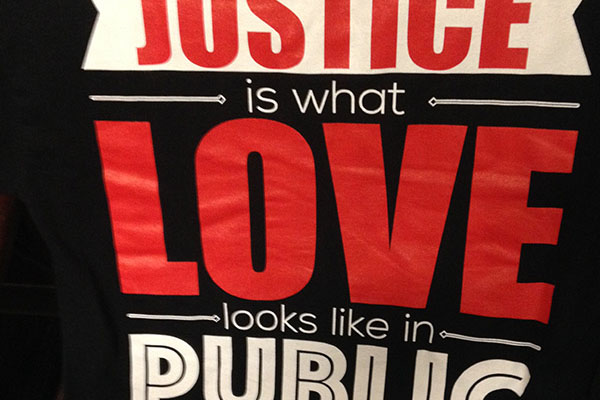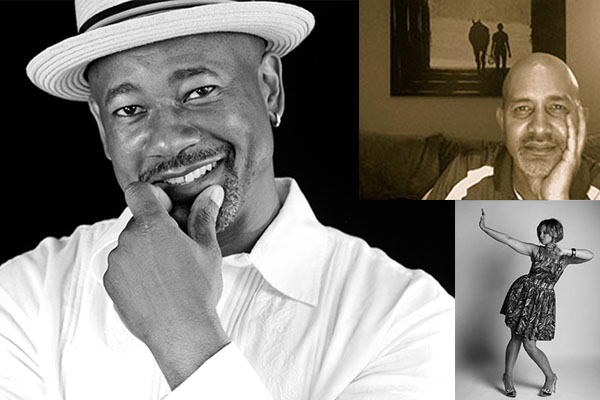Conversations with smart people about stuff that affects our world, and how we affect it
Sustainability goes far beyond reducing our carbon footprint and recycling. In this episode, three Appalachian State University professors explore social equity - what it is, and why it may be the most important of the 3E’s of sustainability.
Transcript
Megan Hayes: Appalachian State University thinks a lot about sustainability.
It goes way beyond reducing our carbon footprint or diverting trash from our waste streams – although there’s quite a bit of institutional intention there as well. But sustainability can be defined broadly, even while it has very personal, specific significance to each of us. Today, you’ll hear three Appalachian professors continue a discussion about Appalachian’s commitment to sustainability and how it manifests in our research, our creative work, our teaching and mentoring both in and out of the classroom, and our daily interactions. We see this conversation as a jumping off point, and hope you will be inspired to listen to their entire conversation, which we’ve broken into four parts.
You’re listening to part two now, although you can approach these in any order, in which our panelists engage in a discussion of social equity. I’ve asked them to consider the question, “What do issues of social justice have to do with sustainability?”
But first, let’s introduce you to our panel.
Dr. Dinesh Paudel is an assistant professor in the Department of Sustainable Development, whose research and teaching interests include climate change, identity politics, political economy and subaltern social movements; Dr. Shea Tuberty is an associate professor in the Department of Biology whose research interests are in ecological biology, with a focus on water quality issues. Dr. Tuberty is also co-chair of Appalachian State University’s Sustainability Council; and Dr. Todd Cherry is a professor in the Department of Economics, whose research and teaching interests include environmental and natural resource economics, regional economics and public economics. Dr. Cherry is also the Director of the Center for Economic Research and Policy Analysis at Appalachian and a Senior Research Fellow at the Center for International Climate and Environmental Research - Oslo in Norway.
And now, let’s get to their conversation:
MH: I think that’s a good segue to our next question which is a social issue. It’s a social issue that our campus addressed formally and informally really last year, which is that in racial inequality. Not only on our campus, but also across our nation and really beyond. But this is an issue that we talked about in a number of different formats here last year; it’s an issue we will continue to discuss on our campus. I was recently in a presentation that Bindu Jayne our Chief Diversity officer was giving and she told our audience there is not going to be any checking diversity issues off a list. She’s working on presenting diversity initiatives, but she’s very clear that it’s not a checkbox. This is an ongoing conversation, it’s a conversation that I think very fortunately our students aren’t letting us off the hook for having. I think as a community we want to embrace as well. Dr. Paudel can you talk about what issues of social inequity have to do with sustainability? You’ve talked about that a little bit.
Dr. Dinesh Paudel: Thank you. For me equity is actually the basic fundamental of sustainability if you want to achieve and whatever we mean by the word: sustainability. There are historical contexts we must understand and actually use them to really devise and conceptualize sustainability programs. Around the world, all was colonized. We had colonialism, patriarchy, racism … these are and many others very fundamental and historical issues that we haven’t resolved. We have produced and reproduced again and again those differences, differences along the line of race, gender, class and so many other valuables. Unless and until, we deal with that, we are not going to achieve that kind of social well-being with these fundamental to achieving sustainability. With respect to that this social equity and justice is actually really fundamental for ecological entity. Research studies have found that communities which are relatively equitable and less hierarchical have a better track record of conserving ecological diversity. That is very well known. Even the record all of the places indigenous people and all of those people how they are indicated to buy into diversity. Why? Because of their ability equity that they have maintained. Even the thing that we have these cases is to demonstrate that equity is fundamental even simply to technically achieve ecological sustainability, but to largely achieve social justice and preserve ecology and to understand economy as social well-being, we must first deal with justice that is equity, because if we doubt that, … let me give you two examples. I am from Nepal and I have studied deforestation in the Himalayas for a long time. In the ’70s deforestation was a big issue in the Himalayas especially in Nepal. It was real, people were actually cutting down trees. Why? Because in the ’50s and ’60s there was a huge industry deforestation companies came in and destroyed them. Some people had to leave their area, then suddenly they realized that we don’t care about it. We keep deforestation, they left it and went farther into the land and they started cutting trees farther down there. It was real, right. Because in one hand a very economic growth model of the ’50s and ’60s and these countries like Nepal are poor because they do not have proper economic growth lead to industrial deforestation. At the same time industrial growth deforestation lead this displacement of these people and that desperation of the people because of their displacement lead to further destruction because they are desperate and they started cutting down more tress. You see how that cycle operates – one and then another and then another. The ’70s actually started realizing that it was not working, they stopped the industrial deforestation; industrial forestry and they started community forestry programs. Which is where they give people… okay this is your forest, If it fulfills your basic needs first and if you can sell more than what you consume then you can do so, you are the owner. Since then deforestation use is almost zero, now in Nepal actually the forest is growing and is more than what it was in the ’70s. So this is one clear example. I just came back from Nepal where there was a huge earthquake and came back a week ago. The earthquake went everywhere, but only certain people got killed and affected. They were mainly poor and women. The earthquake is a very natural process, it didn’t happen equally all over the places. It did happen physically, the actual movement of the waves was very similar all over the places. The actual impact was different to different people because of the system that we have, we put some people in certain positions and others in another position. Think about this big natural disaster – how society is formulated, how society is organized, makes a difference. Therefore without dealing with this fundamental question of equity, forget about achieving sustainability. These are some of my experiences from the Himalayas.
MH: Dr. Tuberty?
Dr. Shea Tuberty: Can you restate the question?
MH: Just in terms of social equity issues, and particularly racial inequality, what does that have to do with sustainability?
ST: Okay, so in my experiences going back to the coal ash experience. That’s really my only one, personally. Everything else that I could talk about is coming from my colleagues both within biology and without. This is a great example that Dinesh has talked about. In the case of the coal ash effect, when the EPA told the Tennessee Valley Authority they needed to empty 80 acres and 60 feet tall of coal ash that had been accumulating since the ’50s. At the time, the Kingston coal plant was the largest power plant based off coal usage in the United States, and probably the world. In the ’50s they were like, “Yeah, we don’t have anywhere to put all this ash, so for now, let’s just put it in the river.” In the ’70s the EPA said, “That’s not a good idea. Why don’t you at least put a wall around it and contain it to keep it from going into the reservoirs.” In 2008 the walls gave out, so a billion gallons of coal sludge went into the water. The community around it actually was a very wealthy one. If you go there, there are eagles and ospreys flying around; there are rookeries of all kinds of aquatic birds including Great Blue Herons – they look like pterodactyls as they’re landing in these tree tops with 8-foot wide nest on top of these trees. It’s pretty spectacular. It’s actually a fish and wildlife bird sanctuary, the actual co-pond. In Tennessee that was a long standing power source built by the Tennessee Valley Authority and then subsequently the reservoirs around it became inhabited by pretty wealthy folks. This is just outside of Knoxville, Tennessee. When the spill happened, those folks sold their property to TVA and went somewhere else. The TVA was forced to extract all the coal ash and move it somewhere else. They took bids in from the community around it: they had to have a train track coming by their community, they had to have an updated landfill with a liner to prevent any leachate from the coal ash, and that home turned out to be this small community in Alabama, which I mentioned is one of the poorest counties in the state of Alabama, and nearly 100 percent of the children going to public school there are on food waivers. So, they were more than happy to make millions of dollars from accepting the coal ash. Again, the immediate effects as far as toxins go affected the community right around the landfill, not the entire community. As soon as that ash started going there, I started getting calls from riverkeepers in Alabama (asking) could I start sampling there? So it was immediately impacting the community there and of course 100 percent black. So as far as race effects go, this is an example of how that is affected all the time.
I can give you another example: the Aluminum Company of America (ALCOA) in Baden, North Carolina, was built right on a narrow area of the Yadkin River at the turn of the century. The community to the west of Baden was all 100 percent black and to the east of it was 100 percent white and that’s where you find the country clubs and the beautiful homes. I’ve been working with that community because there are 40 landfills around Baden full of all of the waste products from producing aluminum, which is highly toxic. This is one of the only communities of a retired ALCOA site that isn’t a super fund site, which is an EPA mega bucks cleanup effort, and we are working to bring that equity in that community up by removing a lot of these toxins that are leaching into their ground water. They create spontaneous fires forming from the gases being admitted from the landfill and they will burn for months and that’s just the way it is in this community. Those folks need social equity in the case of water quality and air quality that they deserve. It didn’t happen in the past, so these wrongs need to be made right and there are many cases in North America and elsewhere. That’s a big part of sustainability and that’s a big part that is often hidden from the public’s perception of what is right and wrong. When you tell the story everyone is behind it, but where that money comes from is somebody else’s problem.
MH: Sounds like a good segue for Dr. Cherry.
Dr. Todd Cherry: I wanted to mention how diversity is valuable on campus. In an intellectual community, as Shea alluded to before, we have this tendency to be around people that we share views with and we have this selective exposure to information that confirms our preconceived notions. We have these world views, but they are shaped around the people we live with and the people we interact with. We can be wrong and we night not know it if we are not exposed to other perspectives. Some of the climate change research has shown that you can predict who is a denier of the science just based on their world views. It has nothing to do with their knowledge of the situation. One aspect of that is that people self-select into these eco-chambers. Once you are in this eco-chamber of thought you could be the most extreme person, in terms of your views on an issue, but in your eco-chamber you feel like you’re normal, like you’re average. It is imperative for everyone to understand the problems and the bigger picture, we all have to get out of our eco-chambers and interact with people we might not normally. That’s one of the great things about kids coming to college and living on campus and challenging themselves. They’re thinking about problems and being exposed to these new ideas.
MH: Dr. Tuberty, can you talk about what you think a three E’s approach to sustainability looks like? This ties in a little bit to what Dr. Panel was talking about earlier.
ST: I think to really discuss appropriately the three E’s we need to back up a step and talk about why we have three E’s. Why isn’t it 10, why isn’t it one? I think three E’s is what we needed to fully immerse the academic community to AppState, and honestly any academic university or academic institution would be remiss if they didn’t focus on some component of these three E’s. Appalachian State University isn’t really unique in what we are doing; a lot of universities are trying to do what we are doing. What three E’s did was allow for most of, not all, but most of the academic community at AppState to find a way to buy in to the strategic plan. It does make perfect since when we talk about our case studies you can always come up with three aspects of it. The inequity or equity, the energy use, and the environmental impacts existing within a place. Those three make it very simple and you find one of those or maybe a combination of them that your particular scholarly activities fit within or your teaching activities fit within. One of my goals as the coach for sustainability right now is to increase the number of faculty that identify themselves with one of these E’s or multiple, even better. Then get them to actively engage with the Office of Sustainability to share what they do and to get them tallied into what percent of our academics are actually involving themselves in sustainability. This goes for an organization called ASU that we get certified through and one of the goals of the office itself is to get ASU in the top 10, the top echelon of universities nationally that call themselves sustainable. Right now we have a majority of our faculty that feel that their class or that their research is sustainable related. I think the three E’s is a way to involve as many as we can, because we don’t want to leave people left out. One of the immediate worries was programs like art or music would be left out, but turns out the sustainable art community is really well organized and is actually a national movement. They were the first to put a grants program together for students and faculty to push that effort forward. I feel like they are one of our best voices on campus and one of our most organized groups as it turns out. Really there isn’t any aspect of the university community that is being left out because of this broad approach to using the three E’s and I think it could be more, but I think three is manageable. I think that is where that came from.
DP: I feel the same. This university is particular in balancing all of the three E’s and taking care of multiple aspects of sustainability, which is quite unique. I feel proud to be a part of it, but globally how we understand the three E’s is problematic. That’s what I was saying and I will repeat it again: When you talk about the three E’s that is a way to define sustainability in the ’80s, basically. It is a very economy centered three E’s even though you have three. You are not talking about 33 percent of that, 33 percent of another E, 33 percent of another E. What you are talking about is economy is the capital E and the other two E’s – equity and the other – are basically cosmetics for the big E that is economic growth. Look at sustainability gains since the ’70s and look at the result now. Environment is further destroyed, right? Social justice and equity is further diluted. Our society partly divided the gap between the rich and the poor is enormous, which was not the case in the ’70s. If we had taken care of all three E’s equally we wouldn’t have this situation. We must understand the fact… we are using the other two E’s as cosmetics to make it look like it is good. For example we have all of these technologies, green technologies and solar – very important. Recycling, we feel so good about it that we are a part of sustainability because I recycle my plastic. What is it doing? It is not reducing the very problem, the very fundamental problem of creating a very unsustainable Earth. What it is doing is giving some kind of good feeling to you and you keep doing business as usual. Therefore the certain things about trees in very egocentric, very economy dominate way. We should think which is social well-being, equity and equality probably. The way we understand economy… if we do not do that and we keep the three E’s as it is, the ecology becomes a marketable tool to commodify and make a part of the economy. Ecology doesn’t remain as it is, as an important element of global sustainability. It just became a part of the economy. If that’s what we want, than let’s not even call it three E’s. Let’s just call it one “E,” economy, that’s what it is driving. Another thing is the way we understand economy is about growth money, which is our unfortunate reality. We must change that. What is our end goal? Making money is our end goal or end goal is something else, there should be something else. You want to be rich and you want to have more money, why? You want to achieve something else that something else should be different. For some people it is happiness, for many others a very peaceful kind of situation. Maybe the end goal is something else, economy is just simply a means to achieve that end goal. And without defining that end goal, what we are doing is we are putting economy as our alluded end goal, which is not the case. When the economy becomes the end goal then ecology and equity become just secondary to that. Therefore we are not dealing with three E’s in a very utterly probable way. What we are dealing with is dealing with one big E and then providing the other two E’s to talk about that big E. I’m sorry to differ with this mainstream understanding of economy, ecology and equity, but that’s what it is. Unless we realize that very painful process, that will not make a difference.
MH: I think that was one of our challenges in talking about how to explain the three E’s, was trying to pull them apart and talk about them individually. It sounds like what both of you are saying so far is that we cannot pull them apart, you have to talk about them all as one.
TC: That’s the key, is that it is a uniformed system and there’s different components of that system. Our social systems, which the economic system is part of that, then you have the government system. The rules that we set forth dictate the outcomes we have. When you’re looking at policy, if you don’t like the outcomes that you’re generating then you can change the rules of the game, so to speak. The one thing to keep in mind is that there’s not one economic set of rules. There are different rules, different policies and some countries are far different than the U.S. You can keep a market system, which I don’t think you could ever get away from. Have rules that give you the outcomes you want. There is an old saying that markets are great servants, but they are really bad masters. You have to keep that in mind and you have to use the effectiveness and the power of markets, to generate the outcomes that you want. Those outcomes are social and environmental and everything that goes with that.
MH: This leads me to a question. It’s a pretty philosophical question, but is there a point in which we can say there is an institution, community, nation or planet that we have achieved this just and sustainable society, system, or state of being?
TC: You would like to think so. I don’t think that’s possible, but I don’t think that’s the question. I think the challenge is to move toward that ideal and to work towards improving things and setting up our systems to generate the outcomes that we want. It’s a journey and I think that’s the challenge in front of us.
DP: I totally agree it’s a journey. We cannot really fix any benchmarks. That’s the problem, that’s how it is a global problem. We always set a benchmark. Mexico you are poor if you become like U.S.A. then you will be good enough. That’s how we predicted all of these global developments around the world. We compare countries; one country is here, another is down there because we always like to see it through these benchmarks. That’s what is causing the problem, since centuries that’s how it is. We have to forget about these benchmarks. One very important thing about this question is that what should we do? The question again becomes let’s forget these benchmarks on the other side. The economic growth side, the more development side, the method of competition side, If we forget that benchmark and start re-defining our society, that the society that has more wealth is prosperous and that’s a good society, I think it will change the discourse and we will find new ways of understanding and that will lead to the a very unknown, but good future. Otherwise we have all of these fixed benchmarks, so many other benchmarks and they are preventing of to think beyond them. For example he was talking about market and we think it is impossible to think beyond it, provided that it is so dominant and so powerful. It is possible to think beyond that, and yes it is not necessary to think that the market exploits all the time, but the way the market is mobilized right now, it is quite exploiting, exploiting both human and natural processes. We must be able to think beyond that and forget about these benchmarks. They are preventing us to think about being flexible and providing a good future. That would be my response.
ST: Those are both great comments. I think one of the things I learned this summer attending the energy summit on campus, which has really become, for the region, a hot bit of discussion of what they world could look like, where our energy consumption and production can go. I heard some really interesting comments on how already in other countries, Germany and a number of others, where they have gone away from centralized energy production based on coal and oil towards a diffused production of energy from housetop solar, to the point where every community is full of people with solar panels on their roofs that were affordable to put in, that were aided by tax relief and/or government assistance having it produced. Countries that focused on solar production, rather than assuming it will never be the answer for energy production, and really not investing in infrastructure to make it happen. What’s happened there is each community owns its own energy production. Every house has all the energy it needs for free, and then sells to an integrator to get rid of their extra energy to those who don’t have the solar capacity on their houses. What it has done is upending the economics and the wealth dispersion from energy production. Instead of having one really rich company that controls all the political and economic power, you’ve got communities that own it. It is taking things back to what we would assume would happen in a democracy. That was to me one of the most eye opening and extremely exciting things that’s coming on the horizon. We like to talk about how China is the super polluter along with the United States and others, but China at least is already not filling the orders for coal-fired power plants. We talk about how they open one a month – they’re not even using those anymore. They are actually going towards solar and they have about 10 or 15 times the solar capacity that we do in the United States already in their annual production at that high level. We were told by some of the best minds in the country that if we had 10 years of that kind of productivity of solar, we could go 100 percent to solar in the United States. That was the first time it has ever come to my table, so I got really excited about where things are going. You talk about markets and stuff… I think humans just think that the way things are is the best way it could be. If they’re not involved in environmentalism or social equity then they don’t realize what is at the root of all of that. As an environmentalist I’m looking for any answer to how can we stop aerial deposition of nitrates and sulfates and acid rain in the mountain tops. I just spent a summer working with high school kids where we proved acid rain is still really important even though the sulfate production and the coal fire power plants of Tennessee, owned by TVA, has been reduced by over 40 percent in the last 20 years. It is still leeching from the forest floors into these streams and it’s still acidifying the water. How long is that going to keep affecting us and how can we stop that more immediately. It’s exciting to me as an academic you’re probably in the know more than someone outside of the academy of what is possible. I think that the ivory tower that we live in, although it may be laughable at times at what we think would be perfect and these impossible things we would like to have happen tomorrow, the long term goals of the academy are to use history, knowledge of economics, mathematics, environmentalism and socialism and pull it all together and to say this is the direction we should be going. History tells us that even the most dominant communities or civilizations have been doomed from the get-go, based on their lack of knowledge due to environmental impacts. The list goes on and on. As human beings in the United States we think that our economy is going to last forever. Is it sustainable? It is not. All the signs are there. I like to talk about the United States as a social experiment that is really working pretty well and we have come to the top echelons of the developed countries because of how well it works. But it is not sustainable the way it is traditionally. We need to tweak it and I think those tweaks will happen sooner than later and that gives me a lot of hope that we will be moving towards sustainability. With every new generation we have to reteach those goals and I think that is why we will never achieve it. You can’t just assume that a baby being born already knows how to be sustainable. You have to teach them so it is one of those constant efforts.
MH: This conversation continues, with a fascinating discussion rooted in economics, as our experts tackle the question, – how do we know if we’re making any progress?
What do you think?
Share your feedback on this story.
An Appalachian State University faculty expert roundtable discussion
An Appalachian State University faculty expert roundtable discussion
Conversations with smart people about stuff that affects our world, and how we affect it
About Appalachian State University
As a premier public institution, Appalachian State University prepares students to lead purposeful lives. App State is one of 17 campuses in the University of North Carolina System, with a national reputation for innovative teaching and opening access to a high-quality, cost-effective education. The university enrolls more than 21,000 students, has a low student-to-faculty ratio and offers more than 150 undergraduate and 80 graduate majors at its Boone and Hickory campuses and through App State Online. Learn more at https://www.appstate.edu.

